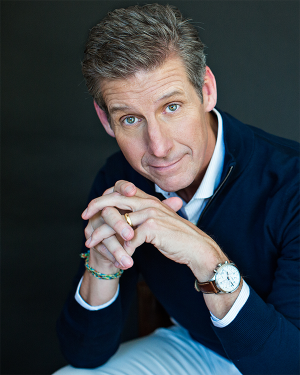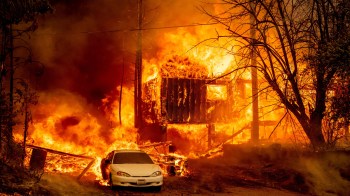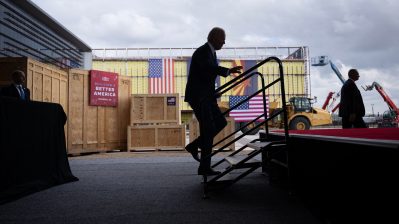TEXT OF INTERVIEW
Kai Ryssdal: For all that’s been written and said about the events of last fall, the collapse of Lehman Brothers and all the rest, there are still a whole lot of questions not entirely answered. Like who knew what when? And why were certain decisions made? New York Times business writer Andrew Ross Sorkin answers some of them in his new book “Too Big To Fail.” We talked earlier this week about the bank marriages and the bailouts and how fast it all happened.
ANDREW ROSS SORKIN: Some of the most pivotal decisions — momentous — you talk about $85 billion being given to AIG, that happened probably during conversations that are shorter than the one that we’re going to be having. So it is remarkable. The sprint, desperately trying to save the system, but of course they’re also trying to save themselves.
Ryssdal: Did they know that they were trying to save the system? Was that right up at the top of their minds?
SORKIN: You know, I’m going to give Hank Paulson and the government a little bit more credit than I think they’ve gotten, which is I think they did see the dominoes lined up. When Bear Stearns was sold to JPMorgan we went into this sort of months, frankly, of complacency where we thought the markets had gotten better, things were going to improve. And during that whole period, the spring through the summer, they’re watching things get worse. And in fact, the thing that sticks in my mind is that we all saw TARP written — remember that three-page document in September of 2008? — but in fact there was a memo, the “Break the Glass” memo, written on April 15, which is eerily, almost freakishly, similar to TARP. It is TARP.
Ryssdal: Break the glass in case of emergency, right?
SORKIN: Exactly. It said we might have to pump the system with, at that time, what they were saying was $500 billion worth of cash into and buy these toxic assets. And that’s something to think that they were thinking about that in April.
Ryssdal: Well, if they knew then, why did Lehman Brothers go under?
SORKIN: It’s a great question. There’s all this sort of government intervention efforts even before September. So you’ll see Hank pressing Warren Buffett to make an investment back in March of 2008. You’ll see Treasury trying to actually make a deal with Barclays in April. You’ll see them bring Bank of America — you know, we thought they showed up in September? — they’re having secret meetings in July. And so they see the train barrelling down the track, and yet they’re all trying to get out of the way or make a deal to do something, and yet it doesn’t happen. And I think by the end, there’s a sense — I don’t want to say that they threw up their hands — but I think they thought this is a lost cause. There was so much political pressure also at that point about whether to save another financial institution. The backlash was big, and that’s where it was.
Ryssdal: You know, it’s interesting. You refer to these guys on a first-name basis: Ben and Hank and Vikram and Jamie. Obviously you had some access to write this book, and you talk about this in the acknowledgement section, that people gave you their diaries, and their personal calendars, and notes they took at these meetings. Do you think that they knew and realized that they were writing history as they were going along making this stuff up?
SORKIN: There was a CEO who very early on in the interview process actually did sit down with me — and I have to say, by the way, that it was not easy getting a lot of these folks to play along, at least in the beginning. But the CEO came to the meeting and he brought his notes from that fateful weekend of Lehman Brothers. And these were, I have to tell you, the most remarkable notes I’d ever seen — better than any reporter. And I said to him, “Why are you giving me this stuff?” And he said, “For the same reason I took them. Which is, I knew this was history in the making.” So I do believe that some of these people did have a sense that this was going to be a moment in time that we would be reflecting on for many, many years.
Ryssdal: Andrew Ross Sorkin is the mergers and acquisitions correspondent for The New York Times. He’s got a book out too about the events of last fall, it’s called “Too Big to Fail.” Andrew, thanks a lot.
SORKIN: Thanks for having me.
There’s a lot happening in the world. Through it all, Marketplace is here for you.
You rely on Marketplace to break down the world’s events and tell you how it affects you in a fact-based, approachable way. We rely on your financial support to keep making that possible.
Your donation today powers the independent journalism that you rely on. For just $5/month, you can help sustain Marketplace so we can keep reporting on the things that matter to you.


















